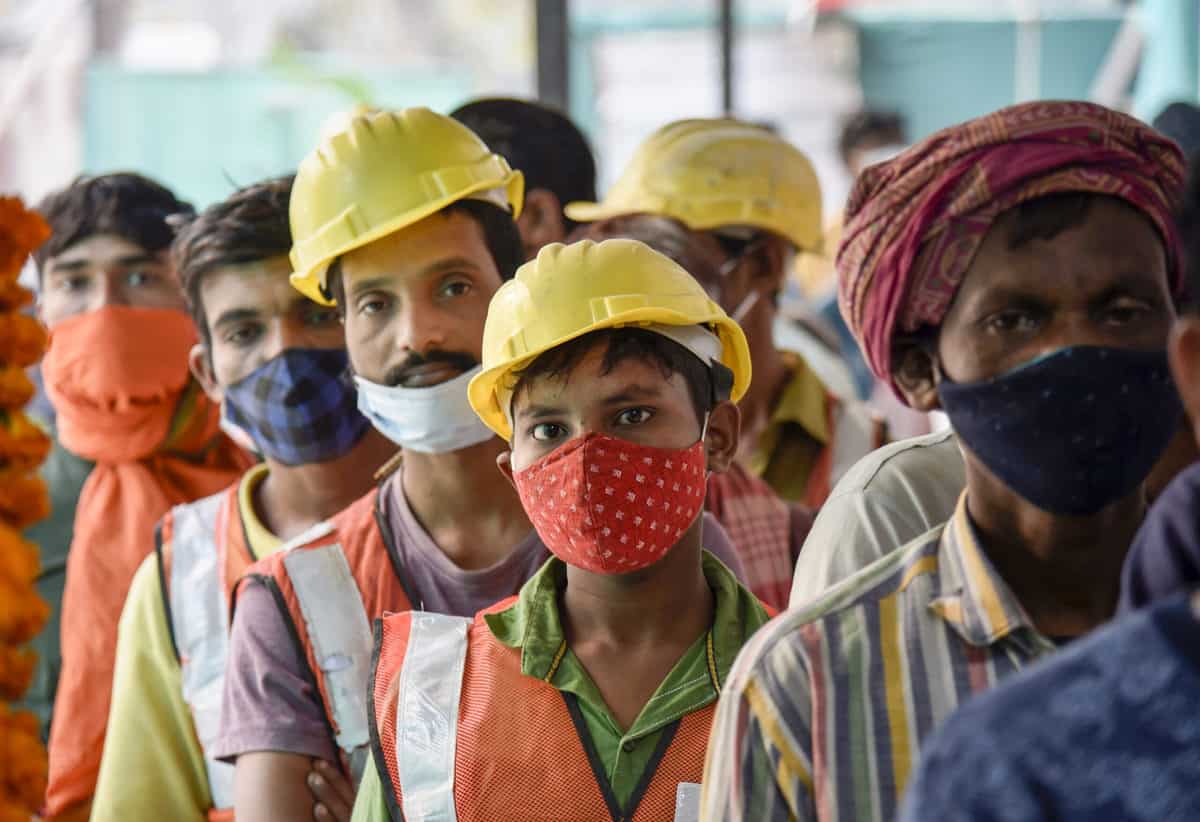
By Mrinmayee Kulkarni
India’s population explosion since its independence over 70 years ago has tripled. While this has led to a young and potentially abundant labour force, India’s urbanisation progress has not kept pace. With only 34% of the population residing in urban areas, India remains primarily rural, presenting unique challenges in terms of labour availability, skill gaps, and migration patterns.
India’s demographic composition and socio-economic transformations vary significantly across states and regions, leading to uneven economic growth. Some areas have developed at a faster pace creating more economic opportunities, while less urbanised regions struggle to keep up with the speed. Consequently, large-scale migration occurs as individuals from less privileged backgrounds leave their homes in search of better prospects. The Harris-Todaro model of development suggests that migration from rural to urban sectors can drive growth.
Internal migration within India is substantial, with around 600 million people estimated as migrants by the “place of last residence” metric. However, most of this migration consists of short-distance inter-district movements. Long-distance migration accounts for only 12% of the total significantly lower than countries like China and Brazil. The low level of migration can be attributed to close kinship and caste relationships, limiting labour mobility. Unfortunately, the redistributive effect of migration in India is low compared to global standards and is the lowest in the Asian region.
Labour migration patterns in India also exhibit a causal relationship with economic opportunity. Less developed regions, especially in Central, Eastern, and Northeastern India, experience significant out-migration trends due to the lack of urban development and economic opportunities. However, this migration primarily benefits more developed regions like Maharashtra, Haryana, and Delhi, where migrants work as unskilled labourers.
The impact of migration on the labour force is complex and can lead to thousands of migrants from lower castes being unemployed, perpetuating inter-generational poverty. The gendered narrative of migration is often overlooked, with male migration primarily driven by employment opportunities and female migration predominantly attributed to marriage. However, there is a recent and notable increase in female migration related to business or employment, attributed to improvements in female education.
One of the significant challenges in India’s labour force is the lack of education and skills among a substantial portion of the population. A considerable percentage of the labour force is illiterate or has only primary education, limiting their ability to access better employment opportunities in formal sectors. This unskilled labour force contrasts with the increasing demand for skilled workers in emerging sectors and industries.
The living conditions and lack of formal protection for migrant workers in India are also concerning. Many migrant labourers work without formal contracts, receive lower wages, and live in unsanitary conditions, leading to health risks and inadequate education for their children.
To address these challenges, the Indian government has introduced initiatives like the National Population Policy and the National Skill Development Mission. These policies aim to provide quality education, vocational training, and employment opportunities to leverage India’s demographic dividend effectively. However, continuous monitoring and evaluation are necessary to ensure their effectiveness.
To bridge skill gaps and promote skill development, comprehensive strategies should be implemented. This includes aligning educational curricula with industry requirements, enhancing vocational training programmes, and promoting apprenticeships. Public-private partnerships can play a crucial role in designing demand-driven skill development programmes. Upskilling and reskilling programmes should focus on emerging sectors and advanced technologies to meet labour market demands.
To promote inclusive growth and reduce regional disparities, targeted policies are essential. Investments in rural infrastructure can attract investments, create employment opportunities, and reduce migration pressures. Special economic zones and industrial clusters can stimulate economic growth in less developed regions. Additionally, promoting entrepreneurship, micro, small, and medium enterprises (MSMEs), and rural livelihood programmes can empower local communities and promote sustainable development.
In conclusion, India’s population changes have significant implications for labour availability, skill gaps, and migration patterns. Regional variations in demographic dynamics influence labour availability across the country. Skill gaps are a critical challenge that affects productivity and competitiveness. Migration patterns play a role in labour availability and skill mobility. Addressing these challenges requires proactive policy interventions and a focus on inclusive growth and skill development to harness India’s demographic dividend effectively.
Sources:
1. Bhagat, R. & Keshri, Kunal. (2020). Internal Migration in India. 10.1007/978-3-030-44010-7_11.
2. Haan (2020). Labour Migrants During the Pandemic: A Comparative Perspective. The Indian Journal of Labour Economics. 63:885–900
3. Sanyal, Tilak. (2018) On Labour Migration in India: Trends, Causes and Impacts. Economic Affairs, vol. 63, no. 1, 4 Mar.
4. Kaur et al. Causes and Impact of Labour Migration: A Case Study of Punjab Agriculture. Agricultural Economics Research Review Vol. 24
5. Lusome R, Bhagat RB. (2020) Migration in Northeast India: Inflows, Outflows and Reverse Flows during Pandemic. Indian J Labour Econ.
6. Mehrotra et al. (2013). Estimating the Skill Gap on a Realistic basis for 2022. Planning Commission
7. Munshi, K., and Rosenzweig, M. (2009). Why is mobility in India so low? Social insurance, inequality, and growth.
8. Sanyal, Tilak. (2018) “On Labour Migration in India: Trends, Causes and Impacts.” Economic Affairs.
9. Singh, Biradar (2022). Migration in India: trends and characteristics. Demography India.
10. Singh et al. (2011) Labour Migration in Indo-Gangetic Plains: Determinants and Impacts on Socio-economic Welfare. Agricultural Economics Research Review.
Mrinmayee Kulkarni is a Research Intern, Centre for Development Policy and Practice
